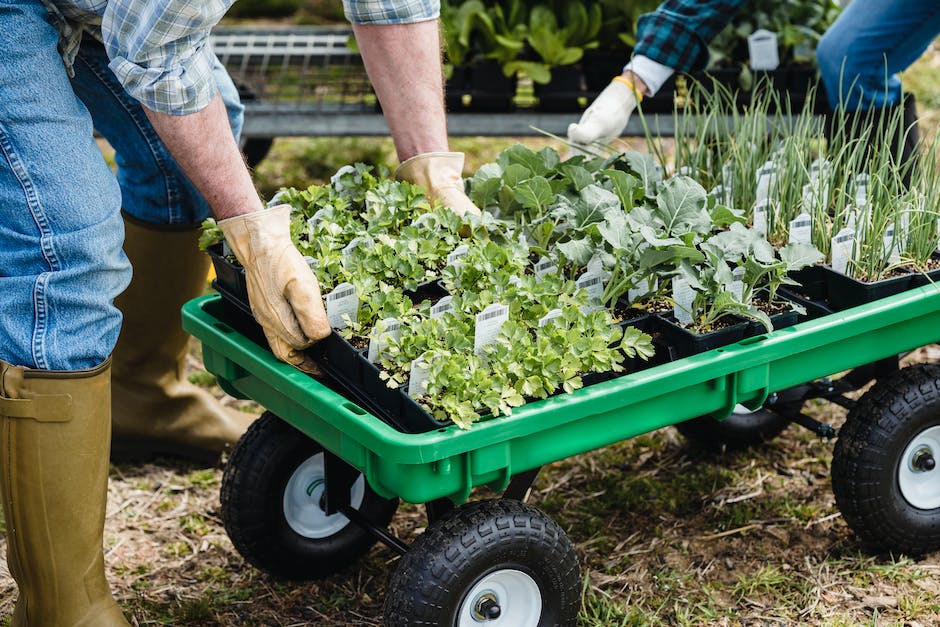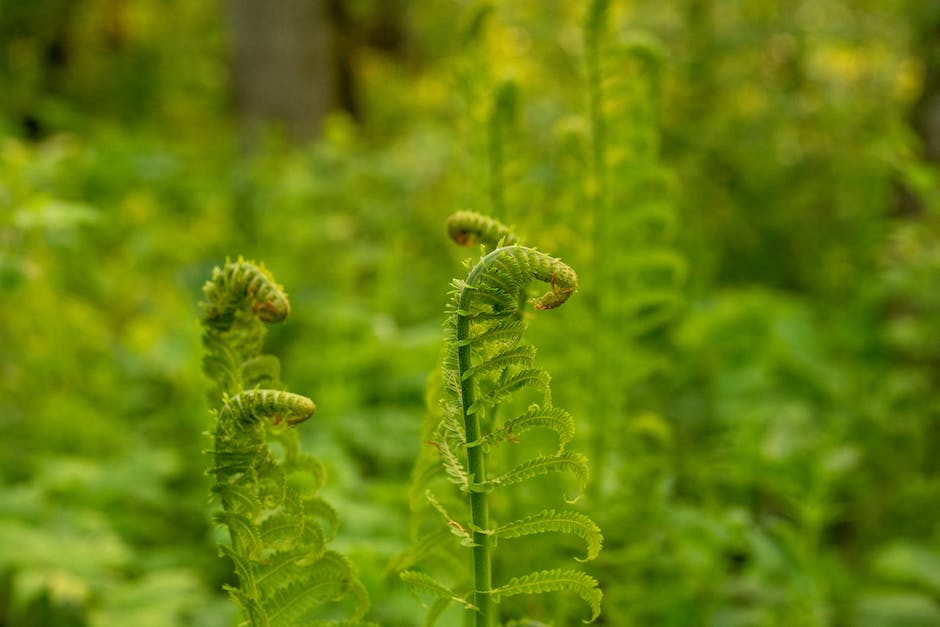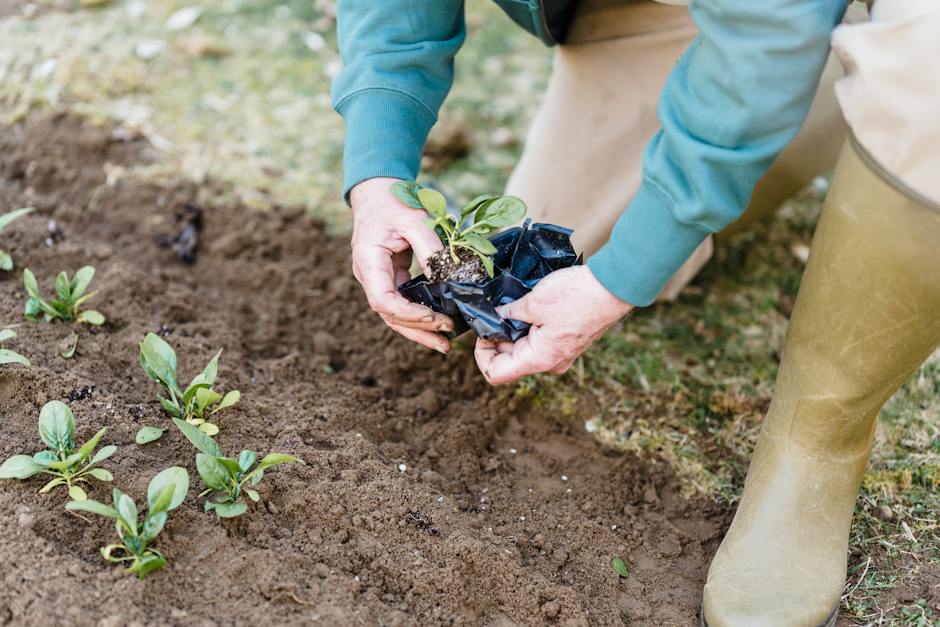My Hydroponic Plants Are Not Growing
If you’re someone who has recently ventured into the world of hydroponic gardening, you may be eagerly awaiting the growth and development of your plants. However, at times, it can be disheartening to find that your hydroponic plants are not growing as expected. There could be several reasons behind this lack of growth, ranging from environmental factors to nutrient imbalances. In this article, we will delve into the common issues that can hinder the growth of hydroponic plants and explore possible solutions to help you overcome these obstacles. By understanding the potential reasons behind stunted growth, you can make the necessary adjustments to ensure the success of your hydroponic garden.
Brief description of the hydroponic system being used

Hydroponic systems are a popular choice for avid gardeners seeking to grow plants without soil. Utilizing a nutrient-rich water solution, these systems provide plants with all the essential elements they need for growth. In my case, I have opted for a vertical hydroponic system – a modern and space-saving approach that allows me to cultivate plants in a controlled environment.
The vertical hydroponic system I am using consists of stacked layers of growing trays, supported by a sturdy framework. Each tray is equipped with small holes, allowing the plants’ roots to dangle freely in the nutrient solution below. The water, infused with essential nutrients, is pumped upward and cascades down through the trays, ensuring optimal hydration and nourishment for the plants.
One of the advantages of this system is its efficiency in water usage. The recirculating nature of the hydroponic cycle prevents water wastage, making it a sustainable choice for cultivating plants. Additionally, the controlled environment offers benefits such as easier pest control, faster growth rates, and higher yields.
However, despite the advantages, I have encountered some difficulties in the growth of my hydroponic plants lately. It is important to identify and address the potential causes promptly to ensure a thriving crop. So, let’s delve into the troubleshooting process and uncover possible reasons for the stunted growth or lack of growth in your hydroponic plants.
Possible reasons why the hydroponic plants may not be growing (e.g., inadequate lighting)
In order to maintain a thriving hydroponic garden, it’s crucial to identify any potential problems that may be hindering the growth of your plants. Here are some possible reasons why your hydroponic plants may not be growing as expected:
1. Inadequate Lighting: One of the most common reasons for stunted growth in hydroponic plants is insufficient or inappropriate lighting. Each plant species has specific light requirements, and if these needs are not met, plants may struggle to photosynthesize effectively. Ensure that your grow lights are of the right type (e.g., LED, fluorescent), intensity, and duration to provide the necessary light spectrum for optimal growth.
2. Improper Nutrient Balance: Hydroponic plants rely on a nutrient-rich solution for their growth, and any imbalance in the nutrient formula can impede their development. It’s important to regularly monitor and adjust the nutrient levels in your system to ensure that the plants are receiving the right combination of essential elements. Additionally, be mindful of pH levels, which also play a vital role in nutrient uptake.
3. Inadequate Aeration: Oxygen is crucial for root health and growth in hydroponic systems. If the root zone lacks oxygen due to poor aeration, plants may suffer from root rot or restricted nutrient uptake. Make sure that your system has proper aeration, such as using air stones or an air pump, to ensure a continuous supply of oxygen to the roots.
4. Temperature Fluctuations: Hydroponic plants thrive within specific temperature ranges, and sudden temperature fluctuations can stress or damage the plants, leading to stunted growth. Aim to maintain consistent temperatures within the optimal range for your specific plant species, avoiding extreme heat or cold.
5. Pests and Diseases: Just like in traditional soil-based gardening, hydroponic plants are susceptible to pests and diseases. Common pests such as aphids, mites, or fungal infections can weaken or kill your plants, resulting in limited growth. Regularly inspect your plants for any signs of pest infestation or disease, and take appropriate measures to manage and prevent their occurrence.
Identifying the potential causes behind your hydroponic plants’ lack of growth is the first step towards troubleshooting and rectifying the issue. By addressing these factors, you can create the ideal environment for your plants to thrive, ultimately ensuring a successful and productive hydroponic garden.
Lack of essential nutrients in the nutrient solution (discuss the importance of nutrient balance)

One of the possible reasons your hydroponic plants are not growing as expected could be the lack of essential nutrients in the nutrient solution. Maintaining a proper balance of nutrients is crucial for the success of your hydroponic system.
In a traditional soil-based garden, plants receive nutrients naturally from the soil. However, in a hydroponic setup, nutrients are supplied through the nutrient solution used to water and feed the plants. It is essential to understand that plants require a range of essential nutrients to thrive, including macronutrients like nitrogen (N), phosphorus (P), and potassium (K), as well as micronutrients like calcium (Ca), magnesium (Mg), and iron (Fe).
When the nutrient solution lacks these vital elements or is imbalanced, plants may exhibit slow growth, stunted development, or even nutrient deficiency symptoms, such as yellowing leaves, poor fruit set, or weak stems. Each nutrient plays a specific role in plant growth, and a deficiency in any of these can negatively impact overall plant health.
To ensure a nutrient balance in your hydroponic system, it is crucial to regularly test and monitor the nutrient solution. Conducting regular water analyses helps assess the nutrient levels to determine if any adjustments are necessary. Most hydroponic growers utilize electrical conductivity (EC) and pH meters to measure the nutrient concentration and acidity of the solution, respectively.
A balanced nutrient solution can be achieved by adjusting the nutrient concentration according to the specific plant requirements. Usually, hydroponic nutrient solutions are available in pre-made formulations designed for different stages of plant growth. These commercial nutrient solutions often provide a complete and balanced mix of macro and micronutrients to meet the plants’ specific needs.
A diligent approach to nutrient management is essential, as over-supplying or under-supplying certain nutrients can lead to imbalances and hinder plant growth. Many hydroponic systems provide flexibility in nutrient delivery, allowing growers to fine-tune the nutrient solution by increasing or decreasing the concentration of specific elements as required.
Remember, maintaining a well-balanced nutrient solution is crucial for ensuring optimal plant growth and productivity in your hydroponic system. Regularly testing and adjusting the nutrient solution, based on the specific needs of your plants, is vital for overcoming any nutrient deficiencies and promoting healthy growth.
pH imbalance in the nutrient solution and its effects on plant growth

pH Imbalance in Nutrient Solution and Its Effects on Plant Growth
Achieving the right pH balance in a hydroponic system is crucial for the successful growth of plants. A pH imbalance occurs when the nutrient solution becomes either too acidic or too alkaline, which can have detrimental effects on the plants.
When the pH level is too high, indicating an alkaline solution, the availability of essential nutrients to the plants is significantly reduced. As a result, the plants may experience nutrient deficiencies, leading to stunted growth, yellowing leaves, and poor overall health. Additionally, high pH levels can also interfere with the enzyme activity in the plants, further hindering their growth.
Conversely, if the pH level drops too low, indicating an acidic solution, the plants may suffer from nutrient toxicity. Acidic conditions make it easier for certain nutrients, such as iron and aluminum, to be absorbed in excess. This accumulation can result in nutrient imbalances and cause nutrient burn, visible as brown or burned leaf edges. The plants might also exhibit reduced root development and reduced nutrient uptake, negatively impacting their growth.
Maintaining the ideal pH level in your hydroponic system is crucial to prevent these issues. Most plants thrive in a slightly acidic to neutral range, with a pH level between 5.5 and 6.5 being optimal. Regular monitoring of the pH levels using testing equipment is necessary to identify and correct any imbalances promptly.
To adjust the pH level, specific pH modifiers can be used. Acidic solutions can be raised by adding substances like potassium hydroxide (KOH) or potassium carbonate (K2CO3) to increase alkalinity. On the other hand, if the solution is too alkaline, substances such as phosphoric acid (H3PO4) or nitric acid (HNO3) can be employed to lower the pH.
Remember that maintaining a stable pH balance is necessary for the overall health and vitality of your hydroponic plants. By regularly checking, adjusting, and optimizing the nutrient solution pH, you ensure that your plants receive the optimal conditions needed for growth and development.
Next section: Identifying Common Signs of pH Imbalance in Hydroponic Systems.
Insufficient aeration in the system and its impact on root health

Insufficient aeration in your hydroponic system can have a detrimental impact on the health and growth of your plants’ roots. Adequate oxygen levels within the nutrient solution are essential for promoting robust root development and nutrient uptake. When oxygen levels are low, roots may become suffocated, leading to stunted growth and weak plants.
One of the main causes of insufficient aeration in hydroponic systems is the lack of proper oxygenation equipment. Without the presence of air stones, diffusers, or other aeration devices, the dissolved oxygen levels in the nutrient solution can quickly diminish. This is especially true in systems that utilize stagnant or slow-moving water, such as deep water culture (DWC) or nutrient film technique (NFT) setups.
By not addressing this issue promptly, you risk exposing your plants to the negative consequences of poor oxygenation. On a microscopic level, the ability of roots to absorb essential nutrients becomes compromised, leading to nutrient deficiencies and poor overall plant health. Additionally, the lack of oxygen can create anaerobic conditions, which promote the growth of harmful bacteria and pathogens.
It is crucial to regularly monitor and adjust the aeration in your hydroponic system to ensure optimal root health. Consider incorporating aeration equipment that suits the size and design of your setup, such as air pumps, air stones, or diffusers. By introducing a steady flow of oxygen into the nutrient solution, you can promote vigorous root growth and prevent common issues associated with insufficient aeration.
Furthermore, maintaining proper water levels in your hydroponic system is equally important. Overfilling or underfilling your reservoir can affect the oxygenation process. Aim for consistent water levels to prevent waterlogging or dehydration of roots and allow for efficient gas exchange.
In conclusion, insufficient aeration in your hydroponic system can have negative effects on root health, impeding the overall growth and development of your plants. By investing in appropriate aeration equipment and maintaining proper water levels, you can ensure that your hydroponic plants receive the necessary oxygenation for optimal roots and thriving growth.
Potential issues with temperature and humidity levels in the growing environment

Maintaining the optimal temperature and humidity in your hydroponic growing environment is crucial for the healthy growth of your plants. Failing to do so can lead to stunted growth or even the death of your plants. If you’re facing difficulties with your hydroponic plants not growing as expected, it’s essential to consider potential issues with temperature and humidity levels.
Temperature fluctuations can significantly impact the growth and development of your hydroponic plants. When the temperature is too high, it can cause stress, wilting, and even burning of the foliage. On the other hand, if the temperature is too low, it can slow down photosynthesis, restrict nutrient uptake, and lower overall plant metabolism. This can lead to slower growth rates and delays in flowering or fruiting.
To address temperature-related issues, it’s important to monitor and control the temperature in your growing environment. Consider investing in a thermometer or a remote temperature monitoring system to track the temperature inside the hydroponic system. If you notice fluctuations, it may be necessary to adjust the ventilation system, invest in cooling or heating equipment, or even relocate your hydroponic setup to a more suitable area.
Humidity is another critical factor in the successful growth of hydroponic plants. High humidity levels can create a breeding ground for fungal diseases and increase the risk of rotting, while low humidity levels can lead to excessive transpiration, wilting, and nutrient imbalances. Finding the right balance is key.
To maintain optimal humidity, consider using a hygrometer to measure humidity levels regularly. If the humidity is too high, consider improving air circulation, using dehumidifiers, or employing fans to increase airflow. On the contrary, if the humidity is too low, methods such as misting the plants, using a humidifier, or placing trays of water nearby can help raise the humidity levels.
Remember that different plant species may have different temperature and humidity requirements, so it’s important to research the specific needs of your plants and adjust your growing environment accordingly. Regular monitoring, maintaining the right balance, and making necessary adjustments will help ensure healthy growth and high yields in your hydroponic system.
Importance of regular maintenance and cleanliness in hydroponic systems

Hydroponic systems offer a unique and innovative way of growing plants, providing a controlled environment that optimizes growth and yields. However, one common issue that hydroponic growers may face is plants not growing as expected. While there can be several reasons behind this problem, one fundamental aspect that should never be overlooked is the importance of regular maintenance and cleanliness in hydroponic systems.
Maintaining a clean and well-maintained hydroponic system is crucial for the health and growth of your plants. Without proper maintenance, the system can become a breeding ground for pathogens, pests, and diseases that can harm your plants. Additionally, a dirty system can lead to clogged or blocked pipes, insufficient oxygenation, and nutrient imbalances, all of which can negatively impact plant growth.
Regular cleaning of your hydroponic system is essential to prevent the buildup of algae, bacteria, and other organic matter. Algae, in particular, can rob plants of necessary light and nutrients, hindering their growth. By diligently monitoring and cleaning your system, you can avoid these issues and ensure optimal plant health.
Cleaning should involve thoroughly rinsing and sanitizing all components of your hydroponic system, including the reservoir, nutrient solution lines, and growing trays. Use bleach or hydrogen peroxide solutions to sterilize the equipment, making sure to follow recommended dilution guidelines. Remember to rinse off any residue thoroughly to prevent harming your plants.
In addition to regular cleaning, maintaining proper nutrient levels is crucial for the growth of hydroponic plants. Over time, nutrient levels can become imbalanced, leading to nutrient deficiencies or toxicities. Regularly monitoring and adjusting the nutrient solution to meet the specific requirements of your plants is vital for their overall health and growth.
Furthermore, maintaining ideal water and air temperature, pH levels, and humidity in your hydroponic system are equally important factors to consider. Ensure that you regularly check and adjust these parameters to provide the most favorable conditions for your plants to thrive.
By emphasizing the significance of regular maintenance and cleanliness in your hydroponic system, you can address and mitigate potential issues that may be hindering your plants’ growth. Regular inspection, cleaning, and monitoring of nutrient levels, temperature, and pH will help you create an optimal environment for your hydroponic plants, ensuring that they grow to their fullest potential.
Pest and disease management in hydroponics

Pest and disease management in hydroponics is crucial for ensuring healthy plant growth and maximizing yields. While hydroponic systems offer a more controlled environment, they are not immune to the challenges posed by pests and diseases. Here are some effective strategies to manage and prevent these issues in your hydroponic setup:
1. Regular monitoring: Make it a habit to closely observe your plants on a daily basis. Look for any signs of pests or diseases such as discoloration, wilting, leaf damage, or the presence of insects. Early detection can significantly limit the spread of pests or diseases and prevent damage to your entire hydroponic system.
2. Maintain cleanliness: A clean and sanitized environment is key to avoiding pests and diseases in hydroponics. Regularly clean and sterilize your equipment, such as reservoirs, growing trays, and tools, to prevent the buildup of harmful pathogens. Pay close attention to areas where debris or organic matter can accumulate, as they can provide a breeding ground for pests.
3. Integrated pest management (IPM): Adopt an integrated approach to pest management, which combines various strategies to control pests effectively. This can include cultural practices like crop rotation, companion planting, or introducing beneficial insects that prey on pests. Additionally, using physical barriers like nets or screens can help protect your plants from unwanted pests.
4. Implement proper hygiene practices: Practicing good hygiene is vital in preventing the spread of diseases in hydroponics. Avoid working with your hydroponic system when you have been handling other plants or soil, as this can introduce pathogens. Also, ensure that you wash your hands thoroughly before interacting with your hydroponic plants or conveying nutrients.
5. Use appropriate pest control methods: In case of an infestation, it is important to choose safe and effective pest control methods suitable for hydroponics. Organic insecticides or pesticides labeled for hydroponic use are preferred, as they do not pose a risk to the health of your plants, consumers, or the environment. Always follow the instructions and recommended dosage when applying any chemical controls.
6. Maintain proper nutrient balance: Ensuring optimal nutrient balance in your hydroponic system can improve the overall health and resilience of your plants. A well-nourished plant is better equipped to fend off pests and diseases. Regularly monitor and adjust nutrient levels based on the specific needs of your plants.
Remember, prevention is the best approach when it comes to managing pests and diseases in hydroponics. By following these guidelines and staying vigilant, you can create a healthy and thriving environment for your hydroponic plants.

